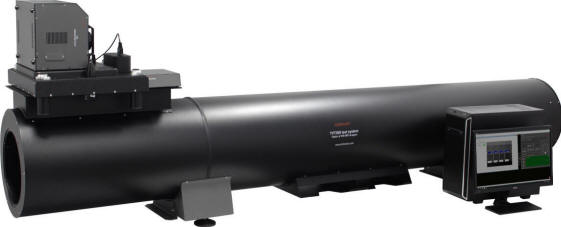Space imagers
Space imagers are a fast growing group of high-end electro-optical imaging systems. They can be treated as a special type of long range imagers. Great majority of space imagers are VIS-NIR cameras sensitive in visible and near infrared range.However, space imagers in form of SWIR imagers or thermal imagers (mostly MWIR imagers) are becoming increasingly popular.

Space imagers are imagers intended to work in space at extreme conditions: 1)vacuum, 2)extreme temperatures. Therefore imaging performance tests of space imagers can be divided into three stages:
- Tests at typical laboratory conditions (normal air pressure, ambient temperature about 20ºC),
- Tests at extreme temperatures (tests at typical temperature chambers),
- Tests at space simulation conditions (tests at special vacuum/temperature chambers).
Inframet can deliver test systems for all three test
levels of tests of space imagers.
Systems for Level
1 tests are modified versions of Inframet typical
systems for testing electro-optical imagers (thermal
imagers, VIS-NIR cameras, SWIR imagers) at mainly
laboratory conditions. Systems for Level 2 tests are
typically built as a systems composed from a Level 1
test system and a special translucent temperature
chamber where the tested imager is inserted. Systems for
Level 3 tests are very special and rarely built
customized image projectors capable to work both at
vacuum and at extreme temperatures without noticeable
degradation of image quality of projected image.

1. Improved manufacturing accuracy of mirror used for off axis reflective collimators:collimators of XR grade (needed to assure ultra high quality of projected images),
2. Improved accuracy of infinity focusing (critical parameter for testing non-focusing space imagers of long focal length)
3. Optional folded design with additional flat mirror located at collimator output at 45 degree relative to collimator axis. This folded design enables to test space imagers looking down (typical work condition)
4. Light source calibrated for work in a series of both broadband and narrow band modes in VIS-NIR band (systems can be used for testing both imagers for surveillance applications and remote sensing applications).
5. Test system and tested camera located at near perfect anti-vibration platform capable to eliminate influence of mechanical vibrations present in room on captured images.
Other Inframet test systems for testing EO imagers (DT for testing space imagers or ST for testing SWIR imagers) can be also modified for Level 1 testing space imagers. Inframet can also deliver systems for Level 2/Level 3 tests.
Systems for testing space imagers are offered as customized products. Therefore please deliver detail technical specifications of space imager to be tested and then Inframet shall present technical offer.
Learn more:
In case of questions please contact us: info@inframet.com .
